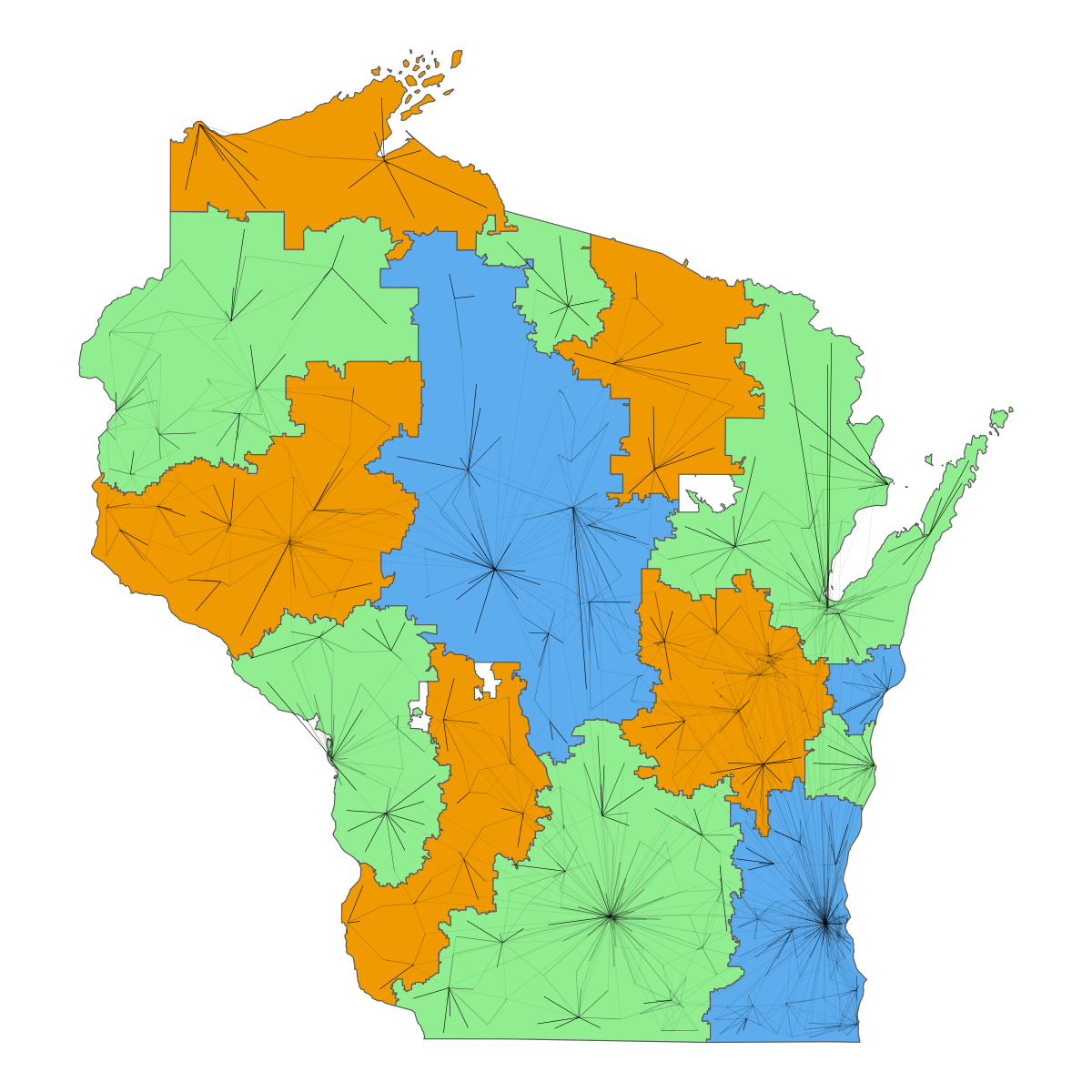Emergency Medicine 1
Session: Emergency Medicine 1
408 - Adequacy of Available Geographic Systems to Capture Pediatric Acute Care Utilization Patterns
Friday, April 25, 2025
5:30pm - 7:45pm HST
Publication Number: 408.3621
Kenneth Michelson, Lurie Children's Hospital, Chicago, IL, United States; Katherine E. Remick, University of Texas at Austin Dell Medical School, Austin, TX, United States; Emily Bucholz, University of Colorado School of Medicine, Denver, AL, United States; Patrick D. McMullen, Lurie, Glenview, IL, United States; Naveen Singamsetty, Ann & Robert H. Lurie Children's Hospital of Chicago, Chesapeake, VA, United States; Andrew Skol, Ann & Robert H. Lurie Children's Hospital of Chicago, CHICAGO, IL, United States; Danielle Cory, Ann & Robert H. Lurie Children's Hospital of Chicago, Chicago, IN, United States; John A. Graves, Vanderbilt University, Nashville, TN, United States

Kenneth Michelson, MD MPH
Associate Professor
Ann & Robert H. Lurie Children's Hospital of Chicago
Highland Park, Illinois, United States
Presenting Author(s)
Background: Care patterns between adults and children differ. Whether existing systems defining healthcare regions perform well for identifying pediatric regions is uncertain. These systems include the Dartmouth Atlas, derived using adult care delivery patterns; and counties and core-based statistical areas, created as political entities and to define economic boundaries (Figure 1).
Objective: We sought to derive the borders of pediatric acute care regions in Wisconsin. We also determined the adequacy of existing systems by comparing how well acute care utilization patterns were captured by our system versus others.
Design/Methods: We studied all ED visits and hospitalizations in Wisconsin in 2019 among children under 16 years old. We excluded visits with missing geographic data, birth hospitalizations, psychiatric visits and hospitals, and out of state visits.
To capture pediatric utilization, we defined home-hospital flows as encounter proportions from each ZIP code tabulation area (ZCTA) to a hospital. Candidate regions were generated using community detection, a network analytic approach that groups network nodes into sets with common connections. We applied the Leiden algorithm to the home-hospital flow network. To arrive at optimal regions, the algorithm maximized modularity, a typical approach in community detection. After defining regions, ZCTAs with no pediatric acute care activity were incorporated into their nearest regions to create the final Atlas of Pediatric Acute Care (APAC).
We compared APAC to other systems on number of regions, square mileage, compactness (a measure of how spread-out regions are), child population size, number of hospitals, proportion with a children’s hospital, and proportion with a major city (defined as a population of at least 100,000). To compare region quality, we compared several network measures including modularity, localization (proportion of total encounters that stay within region), and net flow (ratio of patients entering to leaving a region).
Results: We analyzed 318,328 visits to 126 hospitals. Community detection resulted in 14 regions which were generally larger and contained more children and hospitals than other systems (Table 1). Our system had the highest modularity and localization, and the second-best net flow after Dartmouth HSAs. Home to hospital flow patterns are shown in Figure 2.
Conclusion(s): Dartmouth and political boundaries are marginal at capturing pediatric flow patterns, and APAC better captures pediatric acute care markets.
Table 1: Demographics and quality measures of regions
 Demographics and quality measures of regions. Modularity is a score from 0 to 1 that tests how optimally region assignments capture flow patterns. Major cities were defined as having a population of at least 100,000.
Demographics and quality measures of regions. Modularity is a score from 0 to 1 that tests how optimally region assignments capture flow patterns. Major cities were defined as having a population of at least 100,000.Figure 1: Regional systems

Figure 2: Utilization patterns
 Utilization patterns in Wisconsin and regional borders from our proposed new system. Black segments represent flow of children from ZCTAs to hospitals.
Utilization patterns in Wisconsin and regional borders from our proposed new system. Black segments represent flow of children from ZCTAs to hospitals.Table 1: Demographics and quality measures of regions
 Demographics and quality measures of regions. Modularity is a score from 0 to 1 that tests how optimally region assignments capture flow patterns. Major cities were defined as having a population of at least 100,000.
Demographics and quality measures of regions. Modularity is a score from 0 to 1 that tests how optimally region assignments capture flow patterns. Major cities were defined as having a population of at least 100,000.Figure 1: Regional systems

Figure 2: Utilization patterns
 Utilization patterns in Wisconsin and regional borders from our proposed new system. Black segments represent flow of children from ZCTAs to hospitals.
Utilization patterns in Wisconsin and regional borders from our proposed new system. Black segments represent flow of children from ZCTAs to hospitals.
